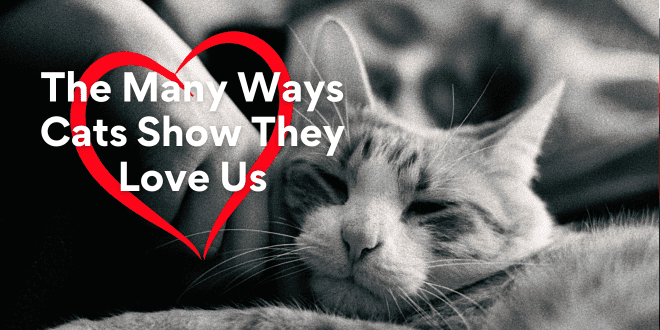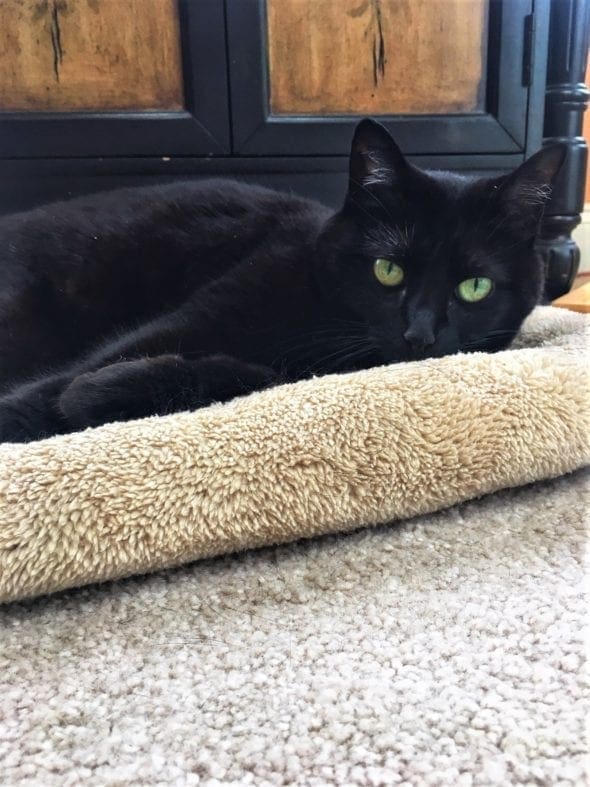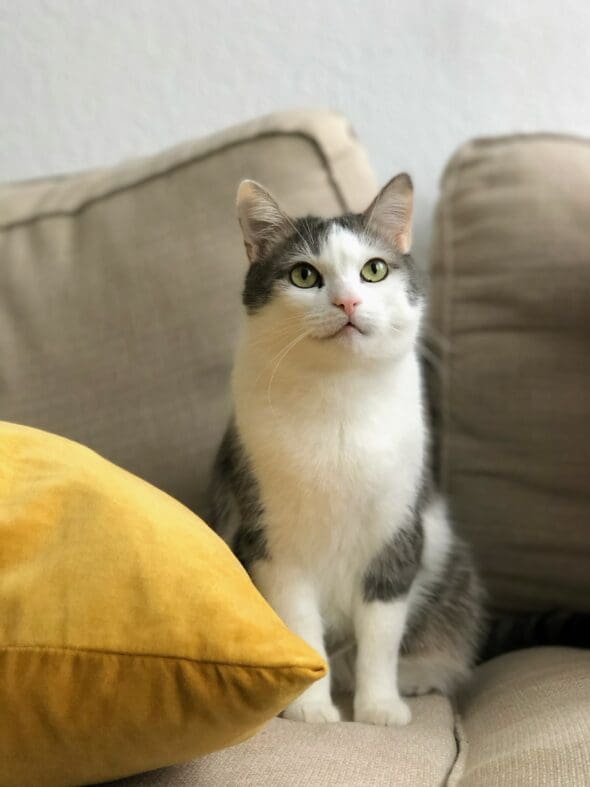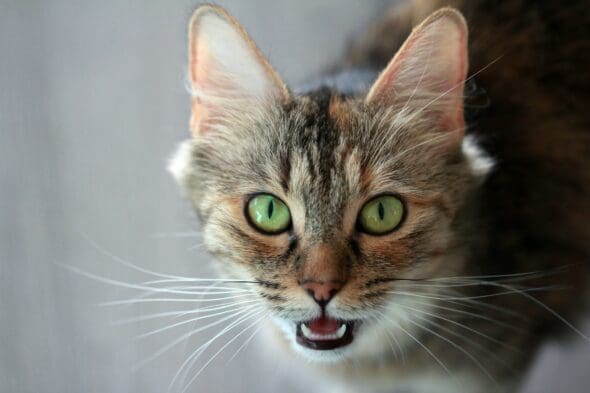
You often hear people say one of the things they don’t like about cats is that they’re not as affectionate as dogs. People love how obvious and direct most dogs are when it comes to displaying their love and eagerness toward you. That wagging tail, vigorous licking, and the exuberant desire to follow you from room to room, can make it very clear how your dog feels about you. But what about cats? Are they cold and unaffectionate? Certainly not. In fact, cats show affection and love in many ways, using body language, vocalization, and behavior. Several of the displays are somewhat subtle so they’re easy to miss. Here are some of the ways your cat expresses affection.
Purring
Probably the most classic example, and one almost everyone thinks of first. Purring is a little more complex though because it can signal other emotional states besides affection. Cats purr when they’re content and relaxed but they may also purr when nervous, trying to self-soothe, in pain, sick, or trying to appease a potential opponent. The low-frequency sound waves of the purr (25-150 Hz) is also believed to have healing qualities. The vibration is believed to promote bone mending and bone density.
To determine whether a cat is purring out of contentment or not, take the circumstances into consideration. If the cat is curled up on your lap, or relaxed next to you as you reach over to gently stroke that soft fur, then it’s safe assume any purring you hear, or vibration felt is an indication of happiness.
Head Bunting
A common way of displaying affection is through bunting. This is frequently referred to as head butting. Your cat may touch or bump his forehead against you or other companion animals. Cats have scent glands on their forehead and this behavior is a way of displaying affection. This is a scent exchange but not in the way some people assume; it’s not a territorial mark, claiming you as the cat’s property, but rather, an affiliative behavior of scent mingling. Combining scents is a common friendly behavior between bonded cats. Consider it a feline hug.
Rubbing Against You
Your cat may rub his cheek against you, or may lean against you and flank rub. These are also gestures of friendliness and affection.
Kneading
This is an endearing behavior you’ve most likely seen many times. When on a soft surface, a cat may knead with the front paws. This behavior is also referred to as making biscuits or the milk tread. This front paw motion traces its origins back to when kittens are nursing, where they instinctively flex and relax their front paws to stimulate milk flow from the mother cat. For kittens, this behavior is associated with a sense of calm, contentment, and security, and it often carries over into adult cat life.
Eye Contact
You may notice your cat looking at you with a soft gaze. As opposed to the direct stare that indicates a potential challenge or threat, this casual, relaxed eye contact is sign of trust.
Slow Eye Blinks
Cat lovers refer to these slow blinks as cat kisses. The cat makes eye contact in a very relaxed way and slowly blinks his eyes. The typical response is to return a slow blink of your own. Reciprocal cat kisses are cherished by many cat lovers.

Photo: Pam Johnson-Bennett
Grooming
Cats who are bonded often engage in allogrooming. This mutual grooming helps combine scents and creates a familiar identity. Scent plays a vital role in recognition and belonging, and in outdoor life, this is of the utmost importance. When your cat grooms you, it’s often a social behavior and an expression of a deep bond.
Grooming is also a way to relieve stress. Cats who are bonded may engage in allogroomimg as a way to keep each other calm. This is a behavior your cat may also display with you.
Following You Around
A cat who wants to be nearby may follow you from room to room. Even if he doesn’t need to be in your lap or be touching you, the cat is displaying affection and attachment by choosing to share the space. The behavior may appear very casual, almost as if the cat is just mildly curious about your whereabouts, or maybe even disinterested when locating you, but make no mistake, your cat cares. The behavior of wandering around the house to find you can also be more intense, involving vocalization and a real concern for where you are. There are many people who have joked about no longer having any privacy in the bathroom once they adopted a cat, but they wouldn’t have it any other way.

Photo: Hendrik Kilimann for Unsplash
Vulnerable Belly-Up Position
In a relaxed setting, a cat may choose to stretch out on his back and in doing so, expose that very vulnerable belly area. This is the ultimate sign of trust since the abdomen is the most unprotected and vulnerable part of the body. A cat who feels comfortable enough to stretch out or even nap in this position is displaying complete trust. That said, it isn’t an indication that he wants to have his belly touched by you. Unlike dogs who often enjoy a good belly rub, most cats don’t, and it frequently triggers a defensive reaction involving the immediate appearance of claws and sometimes teeth as well. Don’t break the bond of trust by attempting to rub that soft belly unless you absolutely know your cat enjoys it.

Photo: Pam Johnson-Bennett
Curling up Next to You
Your cat may enjoy the warmth and softness of your lap, and can’t seem to get close enough to you, or perhaps your cat’s display of affection and love still requires that there be a bit more distance. Your cat may prefer to curl up right next to you to enjoy the occasional gentle stroke on the back of the head or under the chin, or he may want a few more inches of separation and choose to reman just beyond reach. Regardless of whether your cat curls up on your lap, in your arms, or on the sofa cushion next to you, enjoy that display of love and belonging.
Back Against You
Don’t view it as an insult when your cat chooses to lounge next to you or even on top of you with his back in your direction. This isn’t a signal of rejection; this is a sign of trust. A cat who wants to be physically connected to you, or just very close by, might face away from you to indicate he trusts you enough that he can turn his attention to what may be happening in the room. You never know when a wayward mouse might scurry by, and the predator in your cat wants to be ready.
Sleeping on You
If your cat chooses to doze off on you, consider that a sign he feels very safe and finds comfort being in close contact with you. I have risked being late for more than a few appointments because I didn’t want to disturb the cat who was curled up asleep on my lap.
Paw Touches
There are fewer things more tender and loving than feeling the gentle touch of your cat’s paw on your cheek or arm. Those front paws that can be so efficient and strong when climbing, hunting, or running, are also capable of such a velvety soft caress.
Tail Wrapping
Cats who are bonded may walk next to each other and intertwine their tails. When sleeping next to each other, you may also find the tail of one cat casually draped over the other in a gesture of affectionate connection. Your cat may exhibit this behavior toward you by gently draping his tail across your arm or leg as you sit near each other. Perhaps this is the feline version of holding hands.
Upright Tail
An upright tail is typically an indication of a happy cat who has a desire to interact. Your cat may meet you at the door with an upright tail as a happy greeting. There may also be a little curve at the tip and your cat might even give the tail a bit of a flick as an extra greeting.
Vocalization
We already discussed purring, but there are other sounds your cat may make as an expression of happiness, greeting, and affection. Cats have quite the repertoire when it comes to meows and vocalizations. Typically, cats rarely meow to each other; they depend more on scent and body language as their primary tools of communication. Their meowing, however, is often targeted toward us as they’ve quickly learned that it seems to be the one communication most likely to get our attention.

Photo: Sandy Millar for Unsplash
While your cat has certain vocalizations that indicate displeasure or a desire to be left alone, there are also several meows, mews, trills, and chirps, expressing happiness and affection. You may even have developed a communication style with your cat where you engage in back-and-forth “conversation”.
Love Bites
Although this isn’t something you want to encourage, some cats express their affection by giving little love bites to get your attention. With many cats, it’s just a gentle nibble to let you know they’re nearby, but other cats get a little too carried away and that love nibble because a more painful bite. The behavior may begin as licking and then the cat takes it to the next level and nips your skin. Pay attention to the circumstances surrounding ANY biting your cat does to see what triggers it so you can correctly address it. The cat may be trying to get your attention because more enrichment is needed. The bite might actually be petting-induced aggression because you may not have observed previous body language signals indicating the cat was either reaching his limit or getting too stimulated.
Biting, even if done in an inhibited way without breaking the skin and with no obvious signs of aggression (such as hissing or swatting with paws), is not something you should encourage.
Your Cat is Unique
No doubt, if you and your cat have lived together for a while, you’re very familiar with the special ways he displays affection and caring. If you’re new to the world of cats though, it can be easy to overlook some of those tender expressions. However, if you pay a little closer attention, you’ll discover that cats are, indeed, affectionate and loving companions. Their gestures may sometimes be more subtle than those of dogs, but they are no less meaningful. Take the time to learn your own cat’s ways of showing affection to make your relationship even more rewarding.
Need More Information?
For more information on cat behavior and training, check out the best-selling books by Pam Johnson-Bennett. Pam’s books are available at bookstores, as well as online. We’ve included Amazon links here on our website.
 Problem Solving & Advice by Pam Johnson-Bennett Cat Behavior Expert & Best-selling Author
Problem Solving & Advice by Pam Johnson-Bennett Cat Behavior Expert & Best-selling Author



